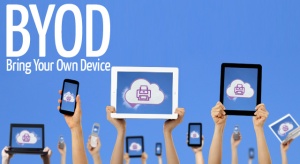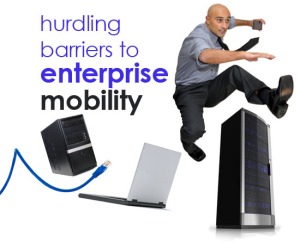Besides my studies at the HWR I work partially in a sport store or more precisely, a Handball Store. Since the Handball world championship takes place in Spain these days our shop is booming. We are literally run over by enthusiastic fans who all were captured by the gigantic marketing machinery every big tournament brings along. In the beginning of January we got the newest collection of all handball brands such as Hummel, Select, Kempa or Adidas. MatchBalls, World cup shirts, shorts and shoes just launched for the upcoming championship.
It is super sweet to see all those little kids emulating and imitating their WM heroes or idols (Little kids is actually wrong, it´s a phenomenon to see how Dads become 12 again). The Question I heard most the last days wasn`t “Hey Mel, how are you?” but rather “Can you bring me the new Adipower stabil 10.0 in size 7.5?” or “Do you have the shoe that Nikola Karabatic is wearing?”
Our stores cash registers are ringing and so do the producer`s but what is so special about the marketing strategy that attracts so many fans and what is really behind all those expensive sport articles?
Tailor-made Commercial and Sponsorship
 If you watch a match in the current world cup you can always see the new commercials for the new products at the electric banners on the sidelines. The German Car Company kfzteile.de /WM also tries to jump on the bandwagon by offering a 0.5% discount for every German Goal.
If you watch a match in the current world cup you can always see the new commercials for the new products at the electric banners on the sidelines. The German Car Company kfzteile.de /WM also tries to jump on the bandwagon by offering a 0.5% discount for every German Goal.
What´s really surprising for me is the fact that the advertisement does match to the current playing nationality. That means for German matches that there is always the DKB, intersport or mybet.de commercial. The highest German handball league hasn´t just a simple name like it is usual in soccer, like premier league or simply Bundesliga but it is titled after its biggest sponsor, the DKB Handball Bundesliga or former the Toyota Handball Bundesliga. This shows that handball is still in the shadows of its bigger brother “soccer” and is not popular enough to survive or compete with other nations without the help of big sponsors like DKB or Toyota.
A shoe in the course of time
Nevertheless, this doesn´t discourage the sport industry to come up with brand new products. Since I am always in contact with those articles I had the chance to notice some things: Let´s take shoes as an example. Their colors keep getting glarier, the design more futuristic than ever before and guess what? The shoe that looks closest to a spaceship always wins!
But unfortunately their quality wouldn´t help its wearers to reach the moon. 50 % plastic and poorly processed seams are not uncommon. But a shoe under a price level of 120 is. But what is the justification for such a high price? Obviously not the Quality aspect…
Brad Tuttle, journalist of business and personal finance for TIME puts it:
“Remember that more expensive does not always mean better. Take bamboo for example: it is cheaper than other exotic woods, but it is resistant to wear and very stylish.”
Read more: http://business.time.com/2012/11/14/does-a-low-price-mean-good-value-or-bad-quality/#ixzz2Iq1izUWP

 Here is an example of the “slightly” development of the same handballshoe model. I received a lot of customer complaints due to breaking plastic pieces in the front part of the spacy pair.
Here is an example of the “slightly” development of the same handballshoe model. I received a lot of customer complaints due to breaking plastic pieces in the front part of the spacy pair.
A little side note: My coach and my dad are still wearing the upper, blue shoe
The designs are changing but what about the production conditions?
Regaining Quality through transparency?
It is an open secret that cheap clothing chains like H&M or KiK employ adults and children in emerging countries for starvation wages in low quality mass fabrication. But the emphasize lies on cheap stores where you do not really expect high quality. And you can always check the red list which offers all brands that should be avoided.
But isn´t it even worse selling at a high price level and producing in a low-cost manner?
A research of the belgian consumer organization, Verbruikersunie, criticizes the blurry access to information about the prooduction processes and supply chains of the big firms like Adidas and Nike. The missing transparency makes it hard to evaluate their performance.
If one believes the social and sustainability report of Adidas you can read their promise to fabricate under fair and environmentally-friendly aspects. But reading further in this 54 page long report is worth it because it provides a list with their producing plants and their problems like wages far beyond the wage floor. But on the other hand, Adidas is positively mentioned on the German webpage aktiv-gegen-kinderarbeit.de for its initiative for security in the factories.
Market leader Nike is exposed to even more accusations regarding child labor than Adidas. If you imagine a typical Nike employee, you expect a hip and trendy youngster but not an 8-year old, right? According to child-awareness.com, “Nike is one of the well-known major corporations and is worth four billion dollars. They have factories in China, South Korea, Indonesia, Thailand and Vietnam, where they employ people, including children for twelve-hour shifts and pay them as low sixteen cents an hour.” The newest revolts of workers in Indonesia were recognized by Nike`s global corporate communications director, Greg Rossiter and brushed aside with the promise:
“Nike takes these claims seriously and company representatives are investigating the claims,”
 The “Just don´t do it”- campaign from UNICEF also clearly defines its opinion about Nike.
The “Just don´t do it”- campaign from UNICEF also clearly defines its opinion about Nike.
Nike vindicates those accusations with another statement on their website:
“Our greatest responsibility as a global company is to play a role in bringing about positive, systemic change for workers within our supply chain and in the industry. We’re looking end-to-end, from the first phase of our product creation process to the impacts of our decisions on the lives of workers in the factories that bring our product to life.”
Those are just examples of accusations against the sports industry. It just makes me sad when I compare the smiling and sparkling kids` eyes when they hold their brand new adipower stabil shoe from their idol in their hand with those wide-opened eyes of a starving kid who just stitched it. Is that the deal? One kid has to suffer for the other one´s happiness?
I already made my decision. As long as there is no clear transparency of those mass product firms like Adidas or Nike I will try to stick with handball brands like Hummel or Kempa, which are both well-known for their fair Business even if my shoes are no spaceships then.







